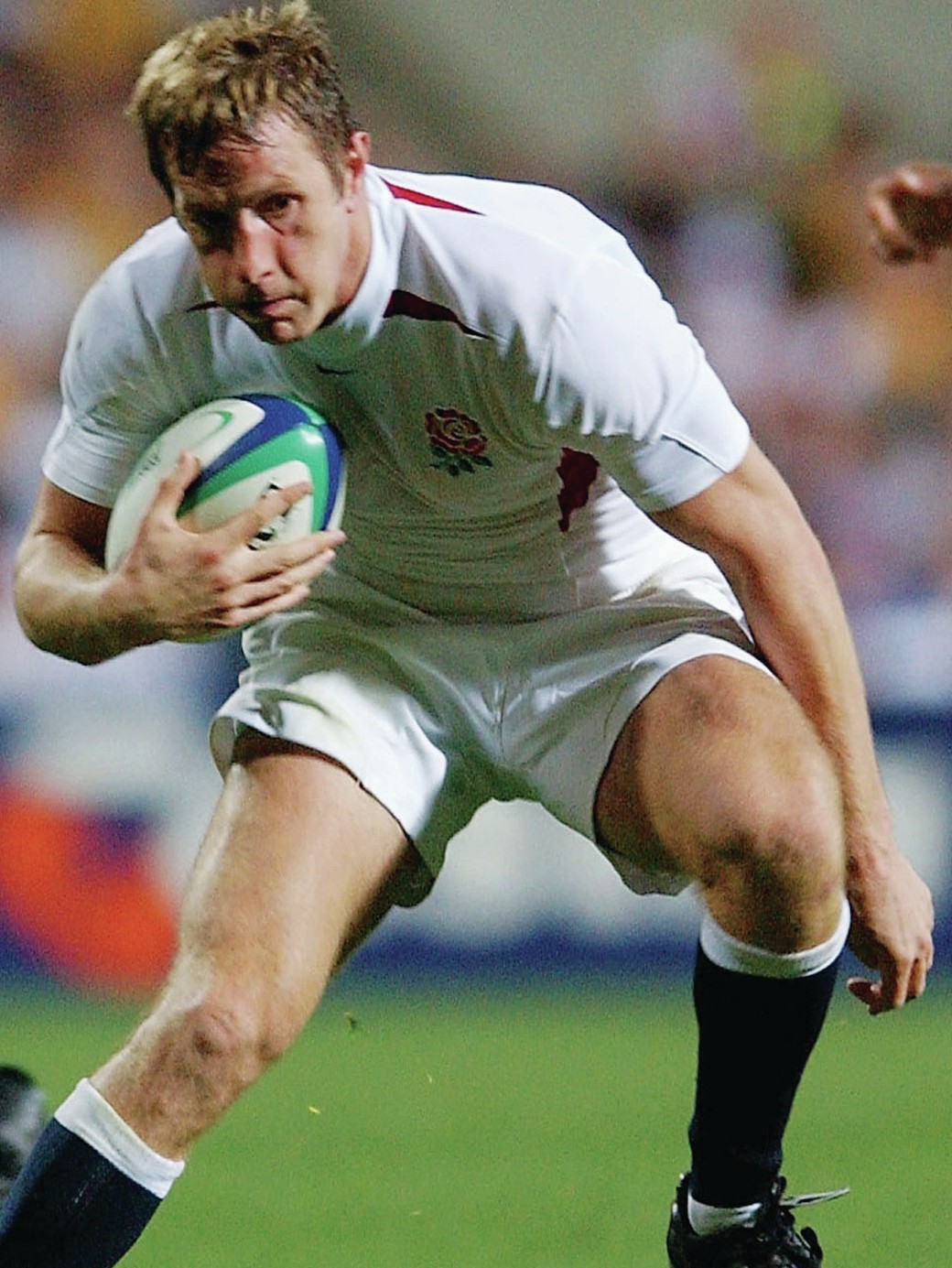

WILL Greenwood has been there, done it and got the T- shirt ten times over and also has as a fine regard for rugby‘s ethos and heroes of yesteryear, so when he insists modern payers are better it’s worth paying heed.
In a recent article the England World Cup winner, while also adding the sensible caveat that it is impossible to really compare eras, nonetheless offered up seven areas of the game – skillsets in which he considers the modern-day player massively outscores the warriors of yesteryear. He concludes that overall they are better.
It was all good festive fun and in that spirit I will now go into bat on behalf of the oldies and before I detail their particular areas of excellence and superiority over the modern brigade I would add my own caveat. The modernday professional gets to work on the game 48 weeks a year, six days a week, six or seven hours a day.
The oldies enjoyed one training session on a Monday night, a midweek game and perhaps a couple of lunch hours down the school gym if they were lucky. The rest of the time they were grafting to pay the bills and feed the kids.
So here we go, or as Will said in his piece: “Let me explain” why the oldies were in fact better or at the very least the equal of the modern day player.
1. Hookers could actually hook the ball. In fact it was a prerequisite of playing in that position. Hookers were not props in disguise, they were a different shape and size. And most of the time the ball went in straight from the 9 which made scrums so much more interesting and unpredictable. Hookers manoeuvred into incredible contorted positions and struck like a cobra. Wins against the head were the most important statistic in any given game.
2: 90 per cent of all tackles were textbook at the waist or below. Yes there were some wild high hits – there has always been reckless nutters in the game – but generally there was an abundance of absolutely textbook chop tackles or scrags around the ankles. Systematic bad tackling technique and illegal hits is largely a phenomenon of the modern pro game.
3. Passing on the run. The big one. Our heroes from the 60s and 70s – and even the 80s until the 1984 Aussies and Mark Ella introduced Rugby League’s “flat ball”– could pass legally, backwards, while running flat out.
The oldies automatically took into account the basic physics and turned their shoulders as they passed and fired the ball backwards at quite acute angles and speed to counter the inevitable forward momentum of running at 15-20mph when they delivered the pass. Some also took one crabbed step sideways and to dab the brakes at the moment of delivery to reduce that forward momentum at the moment of delivery.
Receivers meanwhile appreciated they had to be two three yards behind to make these passes possible and play their part ensuring the ball didn’t travel forward towards the opposition line – the only true definition of a forward pass. Then now and forever.
It’s a highly skilled process – think John Dawes, Mike Gibson, Joe Maso, Phil Bennett – but the modern generation are indulged horribly by the refs and authorities who think more tries automatically make for a better game so obvious forward passes are considered ok. Give a player an inch and they will take a mile and the marginally forward pass is now considered the norm.
It also of course massively devalues and undermines the players – and Greenwood was one – who still possess these skills through their hard work or instinctive genius.
4. The old brigade could ruck. Could they ever. This facet of the game used to speed up the breakdown and made it much harder for defences to get organised when the oppo- sition were on the attack. There were some nasty injuries but probably fewer than the hideous mindless clear outs of players three or four yards from the ball and highly dangerous pile ups that mark the modern-day breakdown.
5. The fired grubber to touch. We remember Gareth Edwards first for his tries but a close second were those incredible rifled grubbers he sent scudding along the touchline that were nigh impossible to field and always veered up horribly on the third bound and often gained his team 50 yards or so. What’s happened to that great skill?
Austin Healey used to employ them a bit and there are a few who still possess the skill, Henry Slade has definitely got it although he tends to use it more in attacking situations rather than clearing kicks. Edwards often used it as his first choice clearing kick under extreme pressure, his best option in the wild west days of the 60s and 70s when flankers were allowed to hang around offside at every breakdown. Done well, they are very hard to charge down. It’s because scrum-halves have lost the skill and coaches started whinging that we now have the monstrosity of the caterpillar and opposition players aren’t ever allowed to touch a scrum-half until he has faffed around endlessly catching his breath before finally deciding to “lift” the ball. It is the lack of this once essential kicking skills in a 9 that has seen this retrograde step in rugby.

6. Every fly-half bar none could launch a spiral bomb. Back in the day they were absolutely bog standard even at school level, every side had two or three practitioners.
Even us forwards practiced them endlessly for fun after scrummaging and lineout drills – and of course trying to catch them was the really tricky bit. Spiral bombs were a thing.
Now only Georg Ford of the modern era has really mastered the art. In a similar vein just about every side I can remember had somebody who could employ the old American football pass, even using unhelpful wet leather balls.
You occasionally see them now but it’s a skill that should surely be much more prevalent with the modern balls being so much easier to hold and grip one handed.
7. 80 minute shifts: Don’t get me started. All front rowers, barring injury, put in an 80 minutes shift on Saturdays and often in midweek as well. They were hard men and warriors for the duration, not just short bursts. They didn’t spend two minutes conning the ref with endless resets. They got on with it. Much fewer smokos back in the day!
8. Catching the high ball: The old brigade didn’t go in for all this show pony macho kung fu, studs first stuff when jumping for a high ball. They jumped, lifting their knees rather than their studs, and cleverly turned towards their own line as they lept so if they did fumble the ball it went backwards rather than forwards. Is that not even coached these days?
9: Tapped penalties: Back in the day teams employed a vast array of clever inventive tapped penalty moves rather than just the modern tap and fall to ground at the feet of the opposition defence as they start another 20 phase pick and go bore fest. Have coaches and players simply given up on trying to fool the opposition at tapped penalties. I refuse to believe they couldn’t come up with something startling and clever. There are some great rugby minds out there.
10. The third half. The greybeards could properly drink, I mean really hold their grog… and still get up at 6am the next day and go to work. And they could sing. They could hold a tune and remember the words, not just shout along to some mindless dirge.





























You must be logged in to post a comment Login